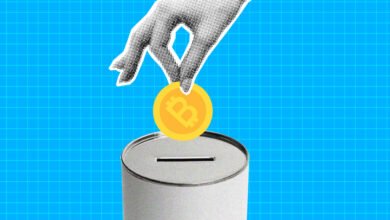
Credit-card issuers have been padding their interest rates, causing cardholders to pay inflated borrowing costs, according to new research from federal regulators.
Though credit-card annual percentage rates have climbed since the Federal Reserve began hiking its benchmark interest rates in 2022, a new analysis from the Consumer Financial Protection Bureau says that’s just part of the reason why it’s more expensive to have unpaid credit-card debt.
APRs, the annual percentage rate that credit-card issuers charge on a balance, are also growing because they keep rising higher above a widely-used benchmark rate, according to a Thursday blog post from CFPB researchers.
It was happening long before the Fed began raising rates, but 2023 set a new record, the researchers wrote. The spread has never been wider between the average APR for a credit card with a balance and the baseline rate, which is known as the prime rate, they said. Most banks use the prime rate to set their rates.
Cardholders with a balance paid over $250 last year just because of that widening margin, the researchers estimated. They modeled it on the costs for a $5,300 balance. Average credit-card balances in 2023’s third quarter surpassed $6,000, according to TransUnion
TRU,
Meanwhile, major card-issuers pulled in an extra $25 billion in interest revenue last year due to the widening margin, the agency said.
Americans finished 2023 with $1.13 trillion in credit-card debt and card delinquency rates at their highest point in more than a decade. Over one-third of U.S. households now have more credit-card debt than savings, a new survey found.
The CFPB researchers looked at Federal Reserve data on average APRs for accounts carrying a balance. They also looked at the prime rate, which is typically three percentage points above the federal funds rate. The Fed’s rate sits at a 5.25% to 5.5% target range for now.
In the fourth quarter, credit cards with a balance had an average 22.8% APR. That’s a 14-percentage-point margin on top of the current 8.5% prime rate. Ten years ago, cards with a balance had an almost 13% APR when the prime rate was 3.3%. That’s a 9.6-percentage-point spread.
At a time when consumer advocates are already wary of companies’ roles behind rising costs, the CFPB analysis stoked skepticism. Major credit-card issuers are more likely to charge higher APRs, according to a different CFPB report last week.
“There’s no reason other than greed for credit-card company CEOs to price-gouge Americans with interest rates that vastly outpace federal rates,” said Liz Zelnick, director of the economic security and corporate-power program at Accountable.US.
The look at APR margins comes days after the news of Capital One’s
COF,
plans to buy Discover
DFS,
If approved by regulators, the deal would create the largest credit-card company by loan volume. Critics worry Capital One will have too much clout and capacity to increase APRs on its cards. Capital One did not immediately respond to a request for comment.
But a banking group pushed back on the idea that card issuers were running up rates just because they could. The Consumer Bankers Association said the research overlooked other CFPB reports that note a growing share of cardholders with very low credit scores.
Lower credit scores can push a cardholder’s APR higher because lenders tend to see more risk extending them a line of credit.
“The CFPB continues to extend beyond its consumer protection authority to pose questions about setting pricing and profits. At best, those are questions about politics — not bank policy,” Lindsey Johnson, the organization’s president and CEO said in a statement.
How credit-card users can save money despite high APRs
Even while credit-card interest rates climb, there are ways for cardholders to cut costs, said Dave Grossman, founder of Your Best Credit Cards.com.
For starters, shop around, because the credit-card industry has a wide mix of rates and rewards, he said. But if your goal is to find the lowest APR and the leanest costs, avoid rewards cards because their rates tend to be higher, according to Grossman.
“Don’t focus on what you earn on rewards if you’re not paying in full every month,” he said.
Balance-transfer cards, which bring on unpaid balances from other cards with a 0% rate for a set period, are still a great option — as long as users use the 0% window to pay down the balance, he said.
Also remember that APRs are definitely not set in stone. “Negotiate your rate,” Grossman said. There’s no guarantee the card issuer will go lower. But a cardholder’s payment history and credit profile are bargaining chips that can work for or against their case for a lower rate, he said.
If a credit-card APR has ballooned for a customer that pays on time, they could have a good chance of shaving down their rate. But it helps to target your request. “You’re going to have the best luck with your primary bank,” Grossman said. “They will be the first ones to want to work with you.”
How have higher credit-card APRs affected your life? Let us know at readerstories@marketwatch.com. One of our reporters might reach out to you to learn more.
Source link





